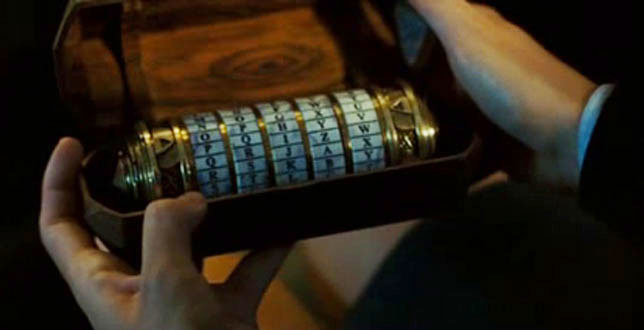

Cryptext claimed the device could encrypt or decrypt at a rate of 15,000 characters per second, which was adequate for the microcomputers and storage needs of the early 1980s. The CX-II was a hardware-based device which gave faster encryption and decryption compared to software-based programs. There were also many software-based encryption programs available. In the late 1970s, DES was the accepted encryption standard and public key encryption was just becoming adopted.
#Eureka cryptext generator#
The technology used by the CX-II is a pseudo-random number generator using a proprietary algorithm. The same CX-II unit could be used with other computers, using the interface card appropriate for that computer. The Applecrypt card was manufactured by Intercrypt and mounts in one of the I/O slots in the Apple II computer, using the standard 25 pin connector. The I/O extension cable is the second component and attaches the CX-II unit to the Applecrypt interface card, which is the third component. It has a connection for a 40 pin I/O cable. This is the unit that performs the hardware-based computations for encryption and decryption. and weighing 1 lb.) which has no exterior lights or buttons. The first is the CX-II unit itself, a molded epoxy brick (1.1 X 3.0 X 5.3 in. The CX-II encryption device has three components. Data is encrypted before being stored in memory, on physical media such as disk or tape, or transmitted by telephone lines. It was originally designed for use in the Radio Shack TRS-80 computer and in 1980 was available for the Apple II computer for a list price of $295. The Cryptext CX-II is a hardware encryption device introduced by the Cryptext Corporation for use in mini and micro computers in 1979. This is connected to the CX-II encryption device for the Apple II, manufactured by CRYPTEXT Corporation, 1981. Please contact the contributing institution for more information regarding the copyright status of this object.ĭescription Applecrypt (TM) peripheral circuit board by Intercrypt, copyright 1981, S/N 1004-002. If they are padding, some other encoding mechanism must be used.Title Cryptext CX-II Data Encryption Device Creator Cryptext CorporationĬollection History San Jose Online Catalog This could be a coincidence but also could be indicative of padding as you suggest. The last two bytes are identical in ciphertext but not in plaintext.It's also not a simple stream cipher using the same key for both, unless some of the ciphertext bytes are an IV. XORing the plaintext (as ascii) and the ciphertext together gives neither a single repeated octet nor the same cryptostream for each, so it's not a trivial cipher.The length of the ciphertext and the number of characters in the plaintext is the same in each case, so it could be straightforward encoding of numbers as ascii with a stream cipher applied.With a ciphertext length of 7 bytes in each case, it's unlikely to be a block cipher (since block ciphers encrypt a block at a time, their length will be a multiple of the blocksize, and a blocksize of 56 bits is pretty unlikely*).We can tell a few things from what you've provided:


 0 kommentar(er)
0 kommentar(er)
